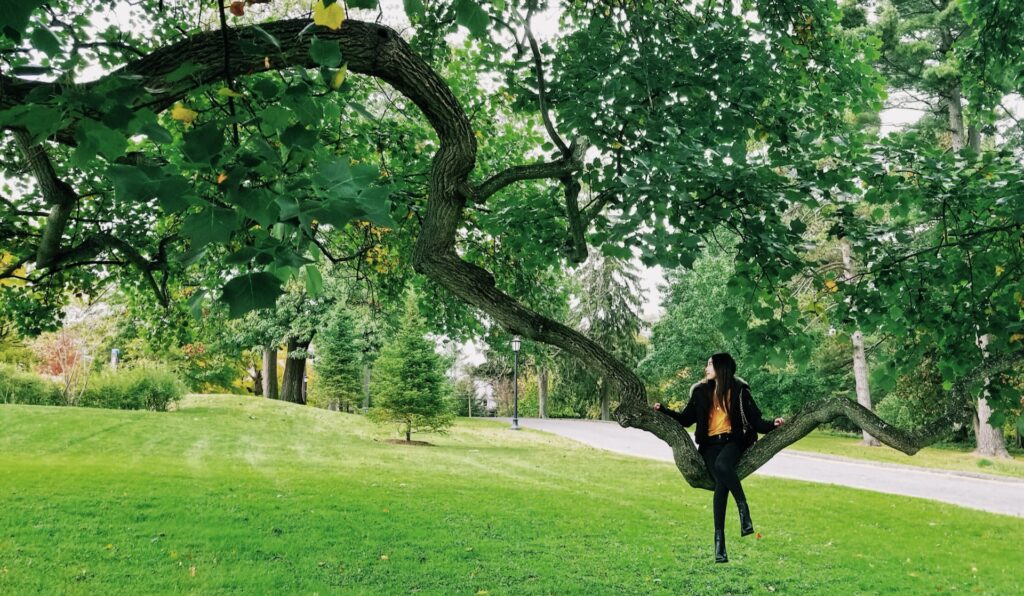
We are a reader-supported education publication. When you buy through links on our site, we may earn an affiliate commission to help us keep providing content.
What do classroom plants, community gardens, and outdoor lectures have in common? They’re all part of a movement to combine nature and learning. Studies suggest several benefits of letting students engage with green space, whether by bringing the indoors out or vice versa.
How can students reap the rewards of pairing nature and education? They can grow vegetables, take walks, go on camping trips, and care for class pets. Here are a few of the benefits of nature in the classroom.
1. Better Concentration
Sitting still in a classroom for eight hours is hard, especially for an energetic child. Spending time outdoors may improve students’ ability to concentrate.
A study where Montessori students took daily nature walks and performed outdoor work for six weeks found the children had improved concentration afterward. The researchers defined concentration as engaging with one material or activity at a time rather than wandering from task to task.
All the children chose to participate even with the option to decline a nature walk. They enjoyed pointing out things like bird nests and leaf patterns. Although it’s unclear whether nature or exercise benefited their concentration, the children expressed a lot of excitement about being outdoors. For teachers struggling to get kids to pay attention, the solution might be as simple as taking a walk.
2. Reduced Stress
Students are a stressed demographic. With the rigorous schedules, tests, and constant socializing that characterize many school experiences, students can be overwhelmed. Luckily, there is evidence spending as little as 10 minutes in nature daily can reduce college students’ stress levels.
Even sitting outside has a beneficial effect. Educators should consider moving their classes outdoors from time to time to help lower the stress levels of their pupils. This can be in a designated outdoor classroom, an empty field with chairs set up, or even blankets on the ground. The sound of wind, birdsong, and rustling leaves will provide a lovely backdrop for a lecture.

3. Better Health
Numerous studies have found exposure to nature — or even just viewing a photo of it — can improve people’s health in several ways. Nature can improve cognitive function, brain activity, mental health, and blood pressure. Exposure to sunlight can boost vitamin D levels and mood, improve sleep, and even improve the outcome of certain disease treatments.
Transplanting plants has been shown to calm people down. And — because outdoor air often contains less pollution than indoor air — it might improve respiratory health. Being outdoors also allows students to get their whole bodies moving. This might benefit kinesthetic learners and the extra exercise helps students sit still through their next lectures.
With all of these potential benefits, educators should strongly consider bringing more nature into the classroom or their students outdoors.
4. Improved Grades
One study found increased tree cover outside a school correlated with better math scores, even after accounting for things like socioeconomic status, gender, and school size. The number of trees in the surrounding neighborhood did not affect math scores. However, the presence of trees around the school led to better grades. How is this possible?
It could be that disadvantaged schools have fewer trees due to lower landscaping budgets, leading to the correlation between poor grades and less green cover. It’s also possible students who view trees outside the classroom feel a sense of stress relief that improves their grades.
After all, a literature review found nature strongly promotes learning, although it’s unclear how. Perhaps it’s by improving attention spans or self-discipline, reducing stress, or making learning more enjoyable. This can tie to higher grades. Regardless of the cause, there is a clear correlation between more green space and better learning outcomes.
5. Enhanced Creativity
Toys may come with instructions, movies are pre-determined, and video games get repetitive, — sticks, rocks, and mud are about as open-ended as it gets. Children who play outside might come up with more original ideas for gameplay. This could translate to new ideas in the classroom.
Allowing students to play outside in a natural space during recess can foster unique social interactions. Children might get excited about finding a lizard or interesting bird and want to talk about it with their peers. They may imitate animals during gameplay. Best of all, it gets students to interact with the real world, engaging their whole bodies and minds.

6. Stronger Environmental Values
Reading about frogs is not the same as handling one. People want to protect the things that interest them and the best way to get students interested in nature is to let them participate in it. One of the benefits of nature in the classroom is students can learn to appreciate the environment, leading to stronger conservation values.
Learning about plants might spark the desire to start a garden. A hands-on experience with animals might lead a student to a career as a biologist. Spending time in an outdoor classroom could inspire students to rally against new development in the area, preventing the city from cutting down trees or paving the field. Overall, students who have experiences with nature could be better environmentalists.
7. More Resilience
Resilience — the ability to bounce back after adversity or failure — improves when educators bring nature into the learning experience. Children attending a preschool class blending traditional and nature-based learning scored higher on self-regulation and attachment skills than others in conventional settings.
Many natural learning experiences are hands-on, which might expose students to unique setbacks. For example, plants might turn brown if they don’t get enough water, or eggs might not hatch if they aren’t turned enough. Students can manipulate their environment to improve these outcomes, potentially leading to greater resilience.
Incorporating Nature in the Classroom
There are many ways to reap the benefits of nature in the classroom. It can be as simple as having more plants in the building, taking walks, or letting students participate in outdoor activities like taking notes under a tree on a sunny day. With studies showing an improvement in mood, health, and concentration, it’s high time to get students involved with nature at school.
latest in learning!
Get the latest updates in learning, teaching and everything in between! Whether you're a student or an educator, we offer the inspiration you need to fuel your classroom experience.









